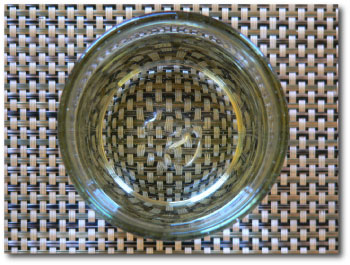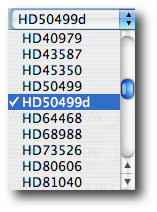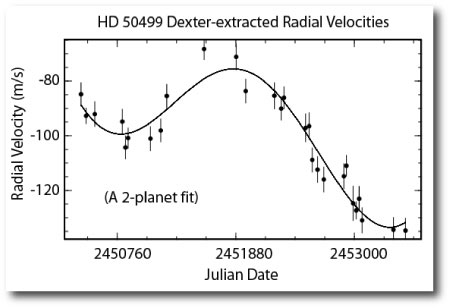
About two weeks ago, I wrote a post about the Dexter application which is available from the ADS website. Dexter extracts digitized data from image files such as .gifs or .jpgs. We’ve been using it to extract radial velocity data sets for planets that have been published without accompanying radial velocity tables. Our goal is to soon have data sets for all of the planets published to date.
That’ll make oklo.org your site for one-stop shopping.
Eugenio will soon be posting a very interesting discussion of the technique and pitfalls of using Dexter to extract radial velocity data sets. In the meantime, I’ve added a sample dextered data set to the systemic console:

The data set HD50499d contains velocities digitized from a figure in the California -Carnegie Planet Search Team’s recent ApJ paper, (entitled Five New Multicomponent Systems). This paper also contains the actual radial velocity data for HD 50499 in tabulated form. This actual data is available on the console by clicking HD50499 (i.e. without the “d” for Dexter).
Try using the console to fit to both the actual data and the Dextered data. You should find that for this particular system, the fits are nearly the same. In this case, Dexter did a very good job of extracting the velocities.

The HD 50499 system clearly harbors at least two satellites. One of them has a very long period, considerably longer than 10,000 days. The way to get the console to fit this system is to fix the outer planet period at 10,000 days, while minimizing on the other orbital parameters.
